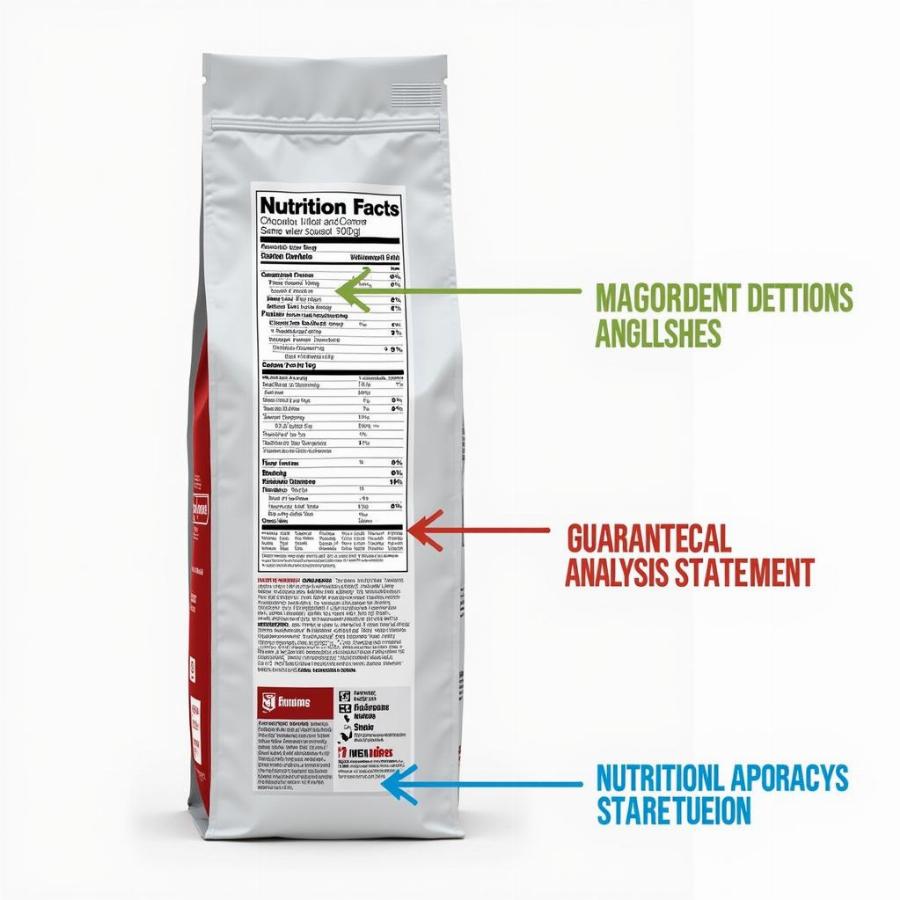Choosing the right food for your canine companion is a big responsibility. With a dizzying array of options lining pet store shelves, it’s no wonder that many dog owners feel overwhelmed when it comes to selecting the best dry dog food for their furry friend. This guide will equip you with the knowledge to confidently navigate the world of dry dog food and make an informed choice that supports your dog’s health and happiness.
Understanding the Basics of Dry Dog Food
Dry dog food, also known as kibble, is a popular choice for its convenience, affordability, and long shelf life. It’s formulated to provide dogs with essential nutrients like protein, fat, carbohydrates, vitamins, and minerals. However, not all dry dog foods are created equal.
Key Factors to Consider When Choosing Dry Dog Food
1. Life Stage: Puppies, adults, seniors, and pregnant or lactating dogs have different nutritional needs. Always choose a formula specifically designed for your dog’s life stage.
2. Breed Size: Small, medium, and large breed dogs have different metabolisms and jaw sizes. Opt for a kibble size that’s appropriate for your dog’s breed to ensure easy chewing and digestion.
3. Activity Level: Active dogs require more calories and nutrients than sedentary ones. Consider your dog’s activity level when determining the appropriate calorie content in their food.
4. Health Conditions: Some dogs have food sensitivities, allergies, or specific health concerns. Consult your veterinarian to determine the best food for your dog’s individual needs.
Decoding Dog Food Labels: A Guide for Pet Parents
Understanding dog food labels can feel like deciphering a foreign language. Don’t worry, we’re here to break it down for you:
1. Ingredient List: The ingredients are listed in descending order by weight. Look for high-quality protein sources, such as meat or poultry, as the first ingredient.
2. Guaranteed Analysis: This section provides the minimum percentages of crude protein, fat, fiber, and moisture in the food.
3. Nutritional Adequacy Statement: This statement confirms whether the food meets the nutritional levels established by the Association of American Feed Control Officials (AAFCO) for a complete and balanced diet.
4. Feeding Guide: Use this as a starting point to determine how much to feed your dog, but remember to adjust the portions based on their individual needs and activity level.
5. “Natural,” “Holistic,” and “Human-Grade”: These terms are not regulated by the FDA and can be misleading. Focus on the ingredient list and nutritional content rather than marketing buzzwords.
 Analyzing a Dog Food Label
Analyzing a Dog Food Label
Common Types of Dry Dog Food
1. Grain-Free: These formulas exclude grains like wheat, corn, and soy, which can be potential allergens for some dogs.
2. Limited Ingredient Diets: These formulas contain a limited number of ingredients, making them a good option for dogs with food sensitivities.
3. Weight Management: These formulas are lower in calories and fat to help overweight dogs achieve a healthy weight.
4. Senior Formulas: These formulas are designed to support the nutritional needs of older dogs, often with added joint support and antioxidants.
Tips for Transitioning Your Dog to New Food
1. Gradual Transition: Introduce the new food gradually over 7-10 days, mixing it with the old food and slowly increasing the ratio of new food to old.
2. Monitor Your Dog: Keep a close eye on your dog’s stool, energy levels, and overall health during the transition.
3. Consult Your Veterinarian: If you notice any adverse reactions, stop the new food and consult your veterinarian.
Making Informed Decisions for Your Canine Companion
Choosing the best dry dog food requires careful consideration of your dog’s individual needs and lifestyle. Remember to prioritize high-quality ingredients, read labels carefully, and consult your veterinarian for personalized guidance.
FAQs About Dry Dog Food
1. How much dry food should I feed my dog?
Feeding guidelines on dog food bags provide a good starting point, but it’s essential to adjust portions based on your dog’s age, breed, size, activity level, and metabolism.
2. Can I mix wet and dry dog food?
Yes, many dog owners choose to mix wet and dry food to add variety and moisture to their dog’s diet.
3. How long does dry dog food last once opened?
Dry dog food typically lasts for several weeks once opened, but it’s essential to store it properly in an airtight container in a cool, dry place.
4. My dog is a picky eater. What can I do?
If you’re struggling to find a dry dog food that your picky eater enjoys, try experimenting with different flavors, textures, and brands.
5. Is grain-free dog food better for all dogs?
Not necessarily. Grain-free dog food can be a good option for dogs with grain sensitivities, but it’s not necessary for all dogs.
Do you have other questions about dog health or care? Check out these helpful resources:
At Beaut Dogs, we’re dedicated to providing you with reliable and insightful information to help you make the best choices for your furry friends. If you need further assistance with finding the perfect dry dog food for your beloved companion, don’t hesitate to reach out to us at [email protected]. We’re here to help!